“With age comes wisdom, but sometimes age comes alone” as Oscar Wilde once said. While I don’t feel particularly enlightened as a veteran freelancer, I’ved worked through an internet boom and crash, before leaping into self-employment during a global recession. And those experiences have given me an idea of how to handle the rising threat of AI.
The hype around artificial intelligence is everywhere, particularly if you work in a creative or data-led field. Machines will dominate writing, music, art, design, recruiting, data science, accounting, construction, manufacturing, hospitality, and coding software. Leaving humanity to fight for the few remaining careers which are too difficult or expensive to automate.
Or will it?
Growing use and acceptance of AI is inevitable, as it’s impossible to put new technology back in the box once it’s been opened up to people. But we often overestimate how quickly things change as a result. The Industrial Revolution is generally thought to have taken around 70 or 80 years, and some argue social impacts arrived much later.
Even in the digital age, that still holds true. I’ve been involved with various projects that seemed logical at the time, from online vehicle buying, to daily news shows on Youtube, but were about a decade too early to be successful. And I’m still being served adverts and recommendations for products I’ve already bought, and that were only purchased as a gift for a distant relative.
More recent examples span augmented and virtual reality, QR codes, crypto, smart TVs and speakers, and whatever anyone decides the Metaverse actually is. It’s not surprising that the longstanding Gartner hype cycle includes a Peak of Inflated Expectations and a Trough of Disillusionment before new technology starts paying off.
So, what advice does this grumpy old freelancer have when it comes to the rising threat of AI?
Don’t Panic!
Such good advice that it became the cover of The Hitchhikers Guide to the Galaxy. And a good tip for freelancing in general, but especially when you’re worrying about things that might take a decade or more to truly impact your life.
Some clients may be starting to read the coverage of AI and dabble with it. But when many still insist on paying invoices with cheques and struggle to cope with online meetings, it’s going to be a while longer before they assign all of their content, marketing or design to an AI system. And those that jump in early due to hype will typically be left slightly underwhelmed and disappointed.
It’s a good idea to be aware of what’s coming to your industry in the short and long-term. But don’t let existential dread about the future stop you from delivering work and results in the next few days, weeks or months.
Start dabbling with AI for yourself
While you shouldn’t just give up and hand over your career to an algorithm, it doesn’t mean you can ignore the future. Especially if you’re expecting to be working for decades to come.
Every new technology offers freelancers and the self-employed a chance to get ahead of the competition by embracing and learning new technologies. If you work for yourself, then there’s nothing to stop you writing using a word processor when everyone else is still using a corporate-issued typewriter. Or drawing on a digital tablet and using editing software rather than a brush and canvas.
Being early allows you to carve out space as an expert. Whether it’s examples including Jasper, CopyAI or Rytr for creating copy, or DALL-E 2, Stable Diffusion and Midjourney for generating images, it’s worth scheduling some time to play around and see what they can do. And what they can’t.
For example, I’ve been using a free trial to play around with Midjourney, generating images via a series of words as image prompts. While results are quick to appear, there’s a learning curve to understanding exactly how to get the right type of results. And having worked with professional designers and illustrators, I miss their insight, skill and the inspiration they offer, which can change my perspective entirely. Meaning that the prompts would need to be radically different.
And it’s easy to find endless examples where AI has generated terrible, unusable images with no basis in reality.
So there are opportunities to adapt your work and specialisms to carve out more time before the robots are able to take over. And also potential new careers specialising in areas relating to AI, helping clients develop prompts and briefs, developing work from initial AI outputs, or other areas which have yet to be invented or defined.
Manage your expectations, and those of your clients
If a client wants to discuss utilising AI as a support tool or potential replacement for you, try not to get defensive, dismissive or confrontational. By testing the options available and understanding how they work, you can be best placed to recommend the benefits and limitations of what’s available at the moment.
We’ve all seen articles claiming AI is capable of creating written work, music or film. But if you look at the details of every report, a human has still been involved in judging what to keep or throw away. What’s currently termed artificial intelligence is largely based on machine learning systems and existing data sets.
Currently, an AI can produce work based on millions of existing blog posts, images or films. But what it produces will depend on the algorithms used, the quality of the data, and the instructions for a particular task. And even then, the AI itself can’t feel whether something is good or bad, just whether it’s hit a certain metric. Which is why so many projects have encountered issues from smart cars crashing to sexist recruiting tools, or incredibly offensive advertising. Or fake news, and inaccurate information.
And even with broad data sets, you’re going to produce a relatively small set of similar results without human intervention. Especially when future algorithms will end up incorporating the work of previous AI in their own inputs. So, if you, or your clients, want to avoid sounding the same as every competitor, it needs some human randomness and serendipity.
Make use of the opportunities AI can present for freelancers
As a writer, I spend a large amount of my time creating guides to fairly complex subjects. And as an SEO, a large part of my work is prioritising changes in terms of their business impact and deliverability.
At the moment, AI isn’t in a position to take on either of those roles successfully without a huge amount of human time, effort and oversight.
But there are plenty of tasks in running a self-employed business that can be made easier, whether it’s time tracking and scheduling, handling client communications and relationships, data collection or financial management.
And while I wouldn’t trust an AI to produce a 3,000-word article without any issues, I’ll happily look at suggestions for more effective headlines, or replacing the odd complicated phrase. Just as I’ll use a spellchecker, or an SEO tool, to check for things that might have been mistyped or overlooked in meeting a deadline. And ultimately, I’ll choose whether to implement those changes, or ignore them.
It’s easy to say freelancers should either passionately embrace AI, or succumb to the destruction of entire industries. But any look at the history of inventions and technology, and my own experience, suggests it’ll end up being somewhere in between both extremes.
Some fields will experience more disruption than others. But one constant in life is change, and freelancers are generally better equipped to adapt and evolve than corporate employees.So while there are legitimate concerns about AI, from the legal implications to whether artificially-created content has the same value as that crafted by human hands and minds, we’re best accepting that AI is going to be with us in some form, and it’s time to make the best of it.






